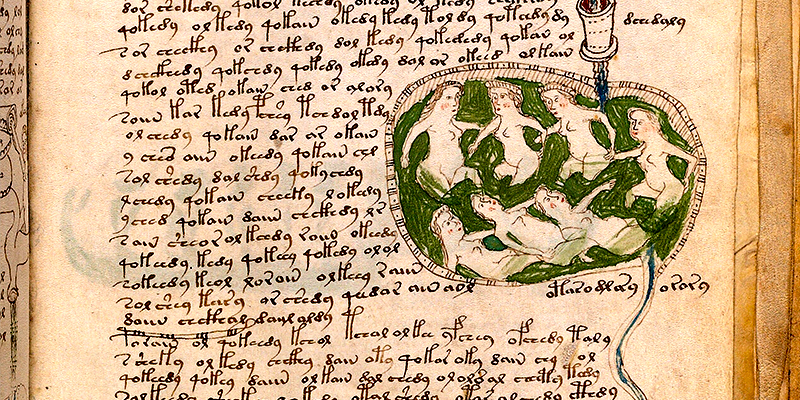

Obviously, this fuels the idea it is an elaborated fake. In addition to the language, the origin of the manuscript is also unknown. It is believed that the manuscript deals with medicine or pharmacology. There are some Latin phrases in the manuscript though most have just been written in the margin. Others back him up by saying that the chronology of letters does not match any European language. Research from professor Gonzalo Rubio, expert in ancient languages from Penn State University, states the language in the manuscript is not of Indo-European, Hungarian or Finnish in origin. Again this means that it might be, or is based on, a real language. Linguists see phonological or orthographic laws in the texts: certain characters must appear in each word and some might never follow others. There are 8,114 unique words in the text out of about 35,000 words. The text is written smoothly with no delay between characters, which might mean the text is not written in code. Most agree there are somewhere between 20 and 25 characters with the exception of a few dozen rare characters that only occur once or twice. It is even unknown how many characters have been used in the manuscript. Research has shown that the texts and drawings were made at the same time.īecause of the unknown language, the manuscript is a famous example in the history of cryptography.

It is named after Wilfrid Voynich, a Polish book dealer who purchased the vellum in 1912. Protein testing and multispectral analysis showed the vellum is calfskin and had not been written on before. It, or at least the vellum upon which it was written, is dated to be from the early fifteenth century. The strange Voynich Manuscript is an illustrated codex in an unknown language.


 0 kommentar(er)
0 kommentar(er)
